Osteopathy & Pregnancy – Pain relief without pills
Common symptoms
Low Back Pain and Pelvic Pain are common in Pregnancy, BUT NOT NORMAL! Figures vary from as low as 25% in one study compared to as high 80% in another. Conditions which women who are pregnant commonly complain of include:
Generalised muscular back pain
SPD (Symphasis Pubis Dysfunction) – pain or discomfort in the joint at the front of the pelvis
Sacro Iliac Joint pain – presenting as pain in the lower back
Sciatica and leg pain associated with back pain
Rib and thoracic spinal pain leading to breathlessness and difficulty in deep breathing
Neck aches and headaches of a mechanical nature.
Some common treatments for musculoskeletal aches and pains, such as drugs, physiotherapy and exercise, are not always suitable for pregnant women. Osteopathy offers a safe and effective way of dealing with these common conditions.
Examination and treatment
Every patient undergoes a unique examination process. This begins with an extensive case history and an obstetric case history to see if she is suitable for treatment in this way. Then following a physical examination she may be offered osteopathic manual therapy to address not only the tissues causing symptoms but why she in particular has the problems and why it has shown itself when it does. Then once the pain begins to subside she may well be offered maintenance treatment to address the areas of her body and spine that are going to change during the coming months. If attention is paid to facilitate this normal physiological change, then the change can take place with the
minimum of stress and discomfort leading to a more natural and easy pregnancy. She will then usually be offered a post natal check at six weeks after she has been discharged from the obstetrician or midwife to assess that mechanically, things have returned to normal.
Tips for your pregnancy
• Take particular care when lifting and carrying especially lifting or carrying other children. Do not carry a small child on one hip for any length of time
• If you stand for any length of time, keep your bottom ‘tucked’ in to reduce strain on the lower part of your spine and maintain equal weight on both legs. Sit down when dressing to avoid standing on one leg
• When sitting, adopt a good sitting posture that supports your back, thighs and feet, use a cushion for support and don’t sit with your legs crossed
• When lying on your side, place a pillow under the ‘bump’ and a pillow between your knees to provide support. When lying on your back, placepillows beneath your knees to keep them bent
• Keep your knees together when getting in and out of the car, turning in bed and getting in or out of bed.

